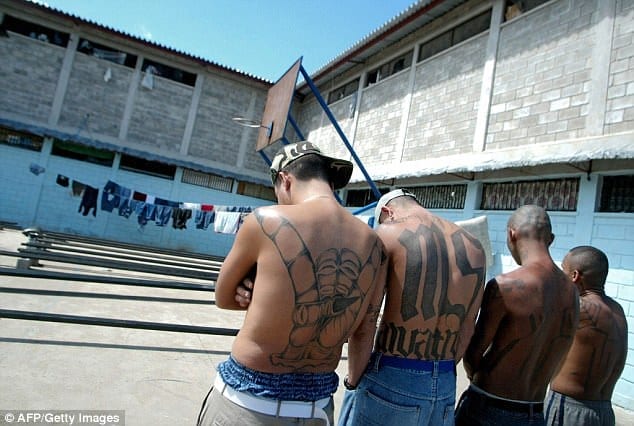
The Connection between the Mara Salvatrucha and Human Trafficking
The Mara Salvatrucha, better known by their acronym MS-13, is one of the largest and most violent transnational criminal organizations in the world. Their motto is “Kill, Rape, Control.” Since the 1980s, MS-13 members have typically engaged in a wide range of violent and criminal activity including, drug distribution, murder, rape, prostitution, robbery, home invasions, immigration offenses, kidnapping, carjacking/auto thefts, and vandalism. More recently there has been a rise in MS-13 engaging in human trafficking. MS-13 is found throughout the Americas but they traffick differently in the United States and in the Northern Triangle countries of El Salvador, Honduras and Guatemala.
In the United States, victims of MS-13 tend to be Latino immigrant girls or girls from the Northern Triangle countries who came into the country as unaccompanied minors. Once the unaccompanied minors are smuggled into the United States, they become prime targets for human trafficking. HHS places minors either in foster care, with family or a sponsor. The majority of unaccompanied minors end up in California, New York, Texas, and the Washington DC area that includes Maryland and Virginia—states that have large Central American populations and thus large MS-13 populations.[1] MS-13 preys on the vulnerability of the unaccompanied minors; some have previously suffered sexual abuse either in their home country or during the trip north; others lack a community and do not speak English. Members of MS-13 seek out the vulnerable young girls using violence and other coercive tactics to intimidate the girl into having sex for money to help financially support the gang. Runaways are also appealing to the MS-13. Family problems, transitions from foster care and economic problems are some of the reasons that unaccompanied minors run away from their homes. Many of the unaccompanied minors may have experienced sexual abuse, exploitation or physical abuse in their home countries or during their migration to the United States and even more suffer from poverty and lack of a stable social network. These are all factors that make young girls more susceptible to human trafficking.
Violence against girls and women is widespread in Honduras, El Salvador and Guatemala—the same nations dominated by MS-13. Women in these countries are disproportionately subjected to domestic violence, sexual abuse and exploitation, sex trafficking and other forms of largely gendered violence. MS-13 has a strong culture of machismo and the high rates of femicide in the region contribute to high rates of sexual violence. While the governments of these countries have produced laws focused on prosecuting and ending violence against women, law enforcement in these countries often do little about the crime, and sometimes contributes to it. An average of two women are killed every day in Guatemala; only two percent of these femicides are ever prosecuted. In Honduras, there is a 95 percent impunity rate for violent crimes against women. In El Salvador, the rate of impunity is about 77 percent. In the Northern Triangle, femicide, human trafficking, and gang presence are inextricably linked with one another. As United Nations Office on Drugs and Crime (UNODC) Representative Amado Philip de Andrés summarized, the only case in which you can make a case that femicide is increasing as a result of transnational organized crime is human trafficking (…) in Central America and the Caribbean. As the number of female human trafficking victims has increased in the region, so has the number of female fatalities, and gangs such as MS-13 are among the main perpetrators of the crime.
